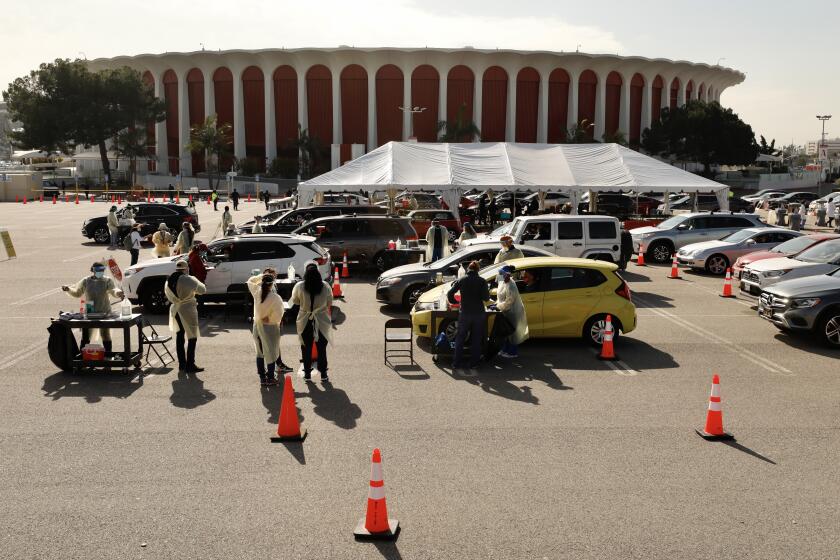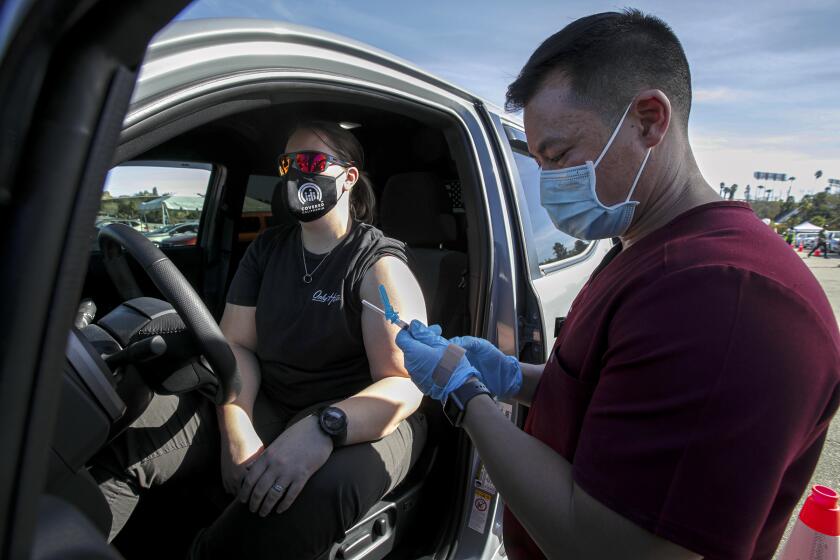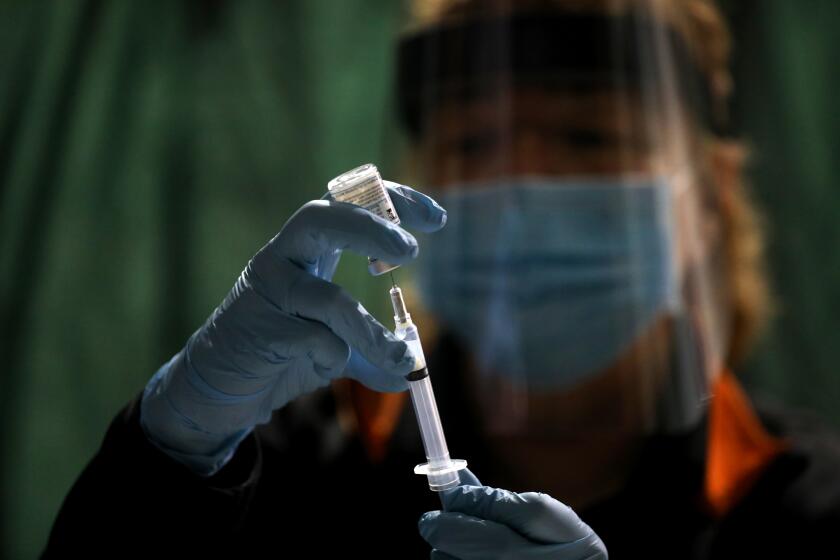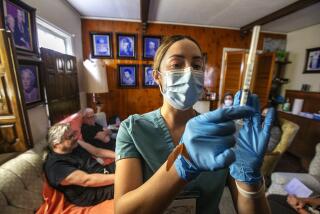What older L.A. County residents need to know about signing up for the COVID-19 vaccine
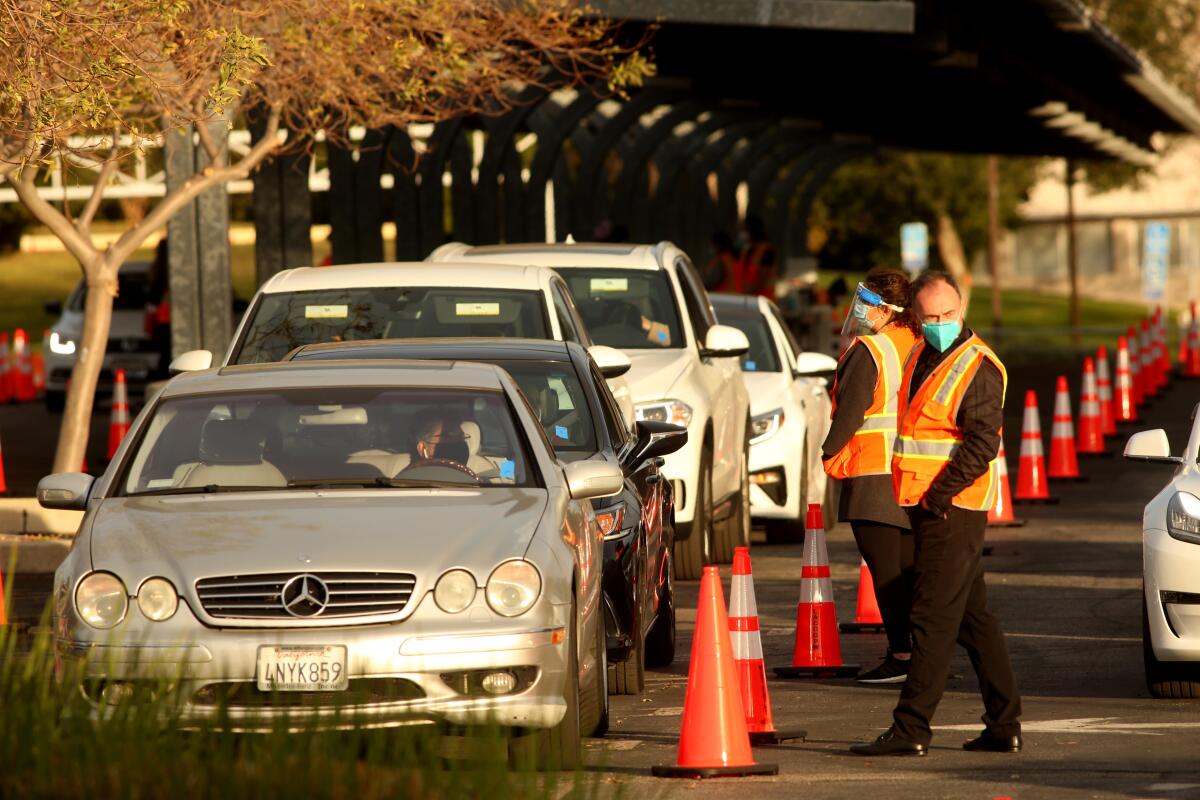
- Share via
The rollout of the COVID-19 vaccine to Los Angeles County residents 65 and older has been marked by confusion and frustration.
On Tuesday, older residents began signing up for appointments. But the process had a rocky start, and it will take time to vaccinate everyone in this group.
Here is what we know now:
Shortages will limit how many older L.A. County residents will be able to get the vaccine in the coming weeks.
1. The basics
Residents 65 and older can sign up for an appointment at the county public health department’s website, vaccinatelacounty.com. Residents without computer access can call (833) 540-0473 between 8 a.m. and 8:30 p.m. for assistance with reservations.
The city of Los Angeles is also offering the vaccine to anyone in Los Angeles County who is 65 or older, through a different online portal. That website connects patients to sites including Dodger Stadium, San Fernando Recreation Park, Lincoln Park, Hansen Dam and Crenshaw Christian Center.
Orange County residents can sign up using the Othena app. Information for Riverside County residents can be found at the Riverside University Health System, while San Bernardino County residents can find vaccine information on the county’s website. Ventura County is offering vaccinations to residents 75 and older, who can sign up for appointments online. 2. Getting through has been a challenge
Many who tried to reach L.A. County’s call center Tuesday afternoon to book an appointment reported that their calls were disconnected after the English and Spanish recorded prompts played. Residents said the websites to sign up repeatedly crashed, and language saying that only healthcare workers could get vaccinated was confusing.
“VaccinateLACounty.com’s reservation system is linked to the state of California system, which crashed for several hours Tuesday afternoon,” the county said in a tweet Tuesday evening. “Thousands of individuals were nevertheless able to schedule vaccination appointments and at this time there are no more appointment slots available at county sites.”
The county will add more workers at its call center, which was also overwhelmed, and will likely add more vaccine appointment times later this week.
Southern California is speeding up rollout of the COVID-19 vaccine. This is where counties stand on their distribution plans.
3. There are limited supplies
It will take time to vaccinate the 1.3 million L.A. County residents in the 65-and-older group, especially because supplies of the vaccine are still finite.
Officials do not anticipate a significant jump in the amount of COVID-19 vaccines the county receives in its weekly allotment in the near future, said Dr. Seira Kurian, director of the L.A. County Health Department’s Division of Medical Affairs.
Kurian said officials originally thought the federal government had reserves of vaccines that would be delivered to counties to beef up supply when municipalities started administering second doses.
“But because it’s unclear how much, if any, of those reserves are available, what will most likely happen is that we’ll probably not be seeing a huge increase in the number of doses coming into us every week, but we are expecting to still be receiving the vaccine doses at the current rate and at the current levels, at least for the short [term],” Kurian said.
Since December, the county has received 685,000 vaccine doses, and more than 70% of those had been administered by the end of last week, according to the Department of Public Health. The county will receive an additional 168,000 doses this week.
Public Health Director Barbara Ferrer said at a media briefing Tuesday afternoon that L.A. County could run out of doses by early next week.
California’s top epidemiologist told healthcare providers on Sunday to stop using a batch of Moderna’s COVID-19 vaccine after a “higher than usual” number of people had apparent allergic reactions at a San Diego vaccination clinic.
4. Patience is still required
There are still some healthcare workers and first responders who need vaccines, and that will slow the speed at which those 65 and older can get their doses.
After that, the state has outlined a schedule of who gets the vaccine next:
Phase 1B
- Those at risk of exposure at work in the following sectors: education, childcare, emergency services and food and agriculture
- Those at risk of exposure at work in the following sectors: transportation and logistics; industrial, commercial, residential, and sheltering facilities and services; critical manufacturing
- Congregate settings with outbreak risks, such as incarcerated and homeless people
Phase 1C
- Individuals 50-64 years old
- People 16-49 years old who have an underlying health condition or disability that increases their risk of severe COVID-19
- Those at risk of exposure at work in the following sectors: water and wastewater; defense; energy; chemical and hazardous materials; communications and IT; financial services; government operations and community-based essential functions
The timing on this group remains unclear.
More to Read
Sign up for Essential California
The most important California stories and recommendations in your inbox every morning.
You may occasionally receive promotional content from the Los Angeles Times.
